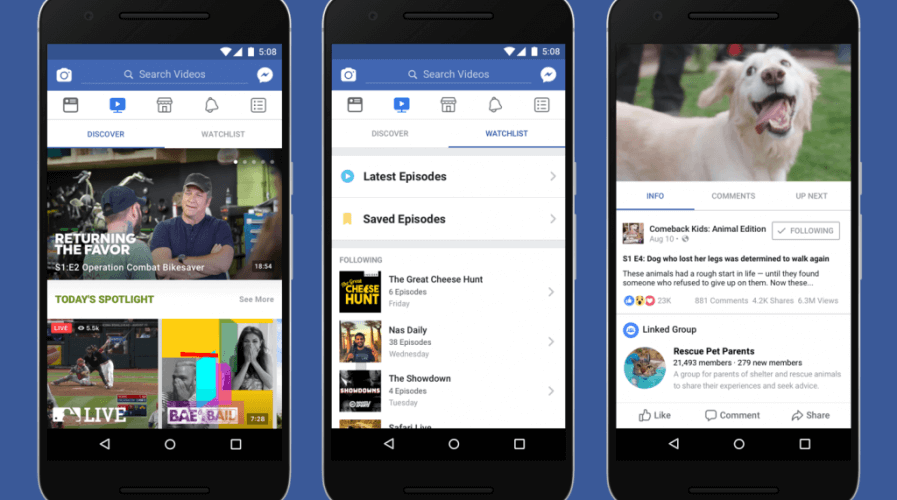
Facebook would change the filter for the News Feed to prioritize what friends and family share, while reducing the amount of non-advertising content from publishers and brands. Source: Facebook
Facebook Watch plans to break into India with localized content
FACEBOOK WATCH is expanding into its first Asian territory, India, in the first few months of the New Year, and will be bringing a gamut of content to the social network’s biggest user base, according to reporting by The Ken.
Watch, launched in the United States in August, is an online streaming service whose offerings range from live sporting events to lifestyle, comedy and children’s entertainment content. The service offers episodic streaming, making it much more like TV for the Internet age rather than a competitor to video content platforms such as Netflix.
Much in the same way that rival social media platform Twitter is working on capitalizing on the “live” factor, Facebook is betting on the fact that everyone wants a one-stop-shop for all their content needs.
Watch is still limited to a small pool of content creators and viewers, but the service will likely see an expansion its user base thanks to its India audience. According to Facebook, it has 241 million users in India compared to the 240 million in the US. Furthermore, India is a hugely mobile country with a smartphone penetration rate of 33.4 percent, a number which is set to explode over the next three years, and a large English speaking population.
India also has one of the lowest price brackets for mobile data in the world, and efforts by telcos such as Reliance Jio to put more smartphones (for free, in some cases) in the hands of their users could have a multiplying effect on the platform’s viability.
These factors will be significant contributors to the company’s success in the South Asian continent. India is poised to be one of the most important markets for online streaming video market; Financial Express said that the domestic market alone could be worth US$272 million this year.
Watch can be accessed via the “video” tab in the platform across multiple devices, and each program will come with its own Page that fans can follow. The feature now already allows its users to download clips for offline watching.
According to The Ken, a hurdle that will have to be overcome is the issue of discoverability, which has plagued Google’s YouTube. Having a separate tab could solve YouTube’s algorithm-determined recommendation system, but it could also put the content out of sight (therefore, out of mind) of users. Facebook already targets its users through its huge data analytics machine, and its app has an automatic play feature for videos in its News Feed.
However, Facebook seems to be making a real effort to penetrate the country effectively by looking into localized content. It’s trying to lure content producers with its Creator app, which offers makers data analytics to help them enhance their videos. In India’s fragmented linguistic landscape, having content in a variety of languages is an absolute must.
READ MORE
- Strategies for Democratizing GenAI
- The criticality of endpoint management in cybersecurity and operations
- Ethical AI: The renewed importance of safeguarding data and customer privacy in Generative AI applications
- How Japan balances AI-driven opportunities with cybersecurity needs
- Deploying SASE: Benchmarking your approach




